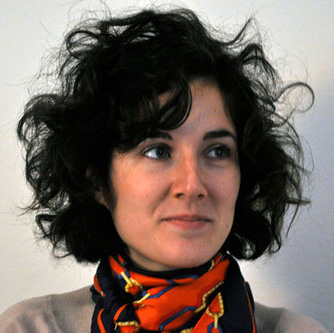Blog
On Axel Hütte’s Chronostasis
30 April 2022 Sat
Merve Ünsal analyzes Borusan Contemporary’s new exhibition.

MERVE ÜNSAL
merve.unsal@gmail.com
Thinking and consequently writing about Axel Hütte’s Chronostasis requires a reengagement with the materiality of photography—photography, arguably, is the translation of a moment in time into an image, as mediated by the camera. I would argue that Hütte does not extend or stop the time of a place, a situation, a moment, but rather reminds viewers of the acute and urgent existence of time in a way that is medium-specifically enlightening. In other words, while Hütte’s photographs appear at first glance to belong an other-worldly, post-human reconnaissance expedition, it is precisely this quality of being unanchored to a moment in time that they are all about time and only about time.
I have always been struck by Niederwald I and Niederwald II as both images palpitate with a surface tension that is hard to decipher at first. On the one hand, with the relatively narrow color palette, the artist presents a vague nebulousness that is at odds with the crisp delineations afforded by the large-format cameras that he uses. On the other hand, his almost focusing on the bodies of the trees in this forest have a disorienting effect; the trees are rootless and headless, and as viewers, we lose our senses of the depth of field and position as the landscape appears severed away from a whole. The tension between the dream-like, muted visuality is in clear contrast with the boundaries of the photograph, which appear to be closing in. The urge to gaze further into the image is in tension with the feeling of being shut off from that which we are not privy to. These two photographs appear restless and within the stillness of the photograph, this restlessness becomes the temporality that can only be achieved within the boundaries of still images.
I want to connect these images to Sagalassos-4, Nymphaeum, as Hütte’s architectural landscapes are also charged with motion in a similar way. Hütte tames the overbearing beauty and affect of Sagalassos to serve his own agenda in that the meticulous compositions host dualities with shifting temporalities. The sculpture located on the left third of the composition, in relation to the larger architectural structure that includes two columns, are contrasted with the cavernous right third of the composition, highlighting the two-dimensionality of a three-dimensional space populated by objects. The fluidity of the marble sculpture that appears to have caught a woman in mid-motion is at odds with the monumental stasis of the columns, which further exaggerate the niche. Hütte again engages with the viewer’s gaze to remind us that our gaze is a meandering one and that we are looking at a space through his gaze for reasons that can only be clarified within photography. This photograph, as well as photographs from the same site, are anything but documents. Their visual accuracy of a space at a moment in time is a tool that Hütte employs to draw the boundary between a photograph and a document in these cases.
Ephesos Terrace Houses-2 is remarkable in that while the body of the camera and the photographer are implied through the positioning of the frame, the architectural structure does not dwarf their presence and there seems to be an eye-to-eye encounter. The light in this photograph, coming in mainly from the upper left-hand corner washes the room while the archway leading to another room produces depth to hint at a body’s movement within architecturally constructed spaces. These implications are compositionally subtle, alluding to the moment without producing such a moment. In other words, the artist converges the stability and the stasis of the architectural structure with the ephemeral element of light to create an image that is about the evocation of having been physically present in that space.
The photographs presented in Chronostasis are a unique representation of Hütte’s sensibility in that the fleetingness of photography is monumentalized, while monumental spaces and landscapes become transient subjects, as the artist captures the antagonism at the heart of photography: to capture versus to imply. It is the tension between these two forces that animate these still images.
ABOUT THE WRITER
Merve Ünsal is a visual artist based in Istanbul. In her work, she employs text and photography, extending both beyond their form. Ünsal is the founding editor of the artist-driven online publishing initiative m-est.org.





